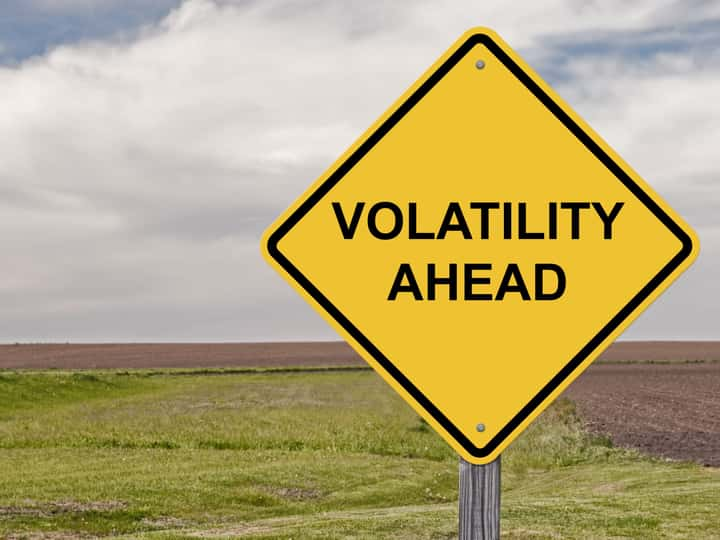After rallying to a record high earlier this month, the Dow Jones Industrial Average (DJIA) declined 1.3% to close yesterday’s trading session at $33,815.90. Investors’ concerns over Biden’s proposed capital gains tax hike on the wealthy may have caused the index to lose some of its value. The proposal to almost double the capital gains taxes could lead to a further downtrend in the coming days.
In addition, the resurgence of COVID-19 cases in several parts of the world has kept investors on their toes. Amid this environment, we think it could be wise to avoid companies with declining financials and lofty valuations.
Some DJIA stocks have been suffering significant losses, and their premium valuations do not justify their financial performance or growth prospects. Hence, we think it’s best to avoid overvalued stocks The Walt Disney Company (DIS - Get Rating), Chevron Corporation (CVX - Get Rating), and The Boeing Company (BA - Get Rating) for now.
The Walt Disney Company (DIS - Get Rating)
DIS needs no introduction. The leading diversified international family entertainment and media enterprise operates Disney Parks, Experiences and Products, Disney Media & Entertainment Distribution, and three content groups: Studios, General Entertainment and Sports that are focused on developing and producing content for direct-to-consumer (DTC), theatrical and linear platforms.
In December, DIS surpassed 137 million paid subscriptions across its DTC services, which included 11.50 million ESPN+ subscribers, 38.80 million Hulu subscribers and 86.80 Disney+ subscribers since its launch in November 2019. The company plans to increase its content output in the coming years, which should improve its performance. .
DIS’ forward P/E currently stands at 92.91x, which is 357.5% higher than the industry average 20.31x. The company’s trailing-12-month EV/EBIT of 331.01x is 1609.8% higher than the industry average 19.36x.
DIS’s net income from continuing operations declined by 99% year-over-year to $29 million in its fiscal first quarter ended January 2, 2021. Its revenue declined 22% from its year-ago value to $16.25 billion, while its segment operating income declined 67% year-over-year to $1.33 billion over this period. The company’s EPS decreased 98% from its year-ago value to $0.02.
A $0.27 consensus EPS estimate for current quarter, ended March 2021, represents a 55% decline year-over-year. The $15.85 billion consensus revenue estimate for the current quarter represents a 12% decrease from the same period last year. The stock has declined 5.2% over the past month.
DIS’ POWR Ratings are consistent with this bleak outlook. The stock has an overall D rating, which translates to Sell in our proprietary ratings system. The POWR Ratings assess stocks by 118 different factors, each with its own weighting.
DIS is also rated a D in Growth, Value, and Quality. Within the F-rated Entertainment – Sports & Theme Parks industry, it is ranked #3 of 13 stocks.
To see additional POWR Ratings for Momentum, Sentiment, and Stability for DIS, Click here.
Chevron Corporation (CVX - Get Rating)
Formerly known as ChevronTexaco Corporation, CVX is involved in integrated energy, chemicals, and petroleum operations globally. It operates through Upstream and Downstream segments. The company is also involved in cash management and debt financing businesses, insurance operations, real estate activities, and technology businesses.
This month, Chevron U.S.A. Inc., a subsidiary of CVX, and Toyota Motor North America, Inc. signed a memorandum of understanding to work towards a strategic alliance on Hydrogen to advance a global hydrogen economy. Toyota’s experience in developing hydrogen powered fuel cell electric technology coupled with CVX’s deep resources in the energy sector has the potential to create great new transportation fuel choices.
In terms of forward P/E, CVX is trading at 18.96x, which is 64.3% higher than the industry average 11.54x. The company’s trailing-12-month 16.94x EV/EBITDA is 67.4% higher than the industry average 10.12x.
In the fourth quarter, ended December 31, 2020, CVX reported a net loss of $665 million. Its revenue and other income decreased 30.5% from its year-ago value to $25.25 billion. The company reported a loss per share of $0.33 for this period.
Analysts expect CVX’s revenue for the quarter ended March 31, 2021 to be $30.37 billion, representing a 3.6% year-over-year decline. The company’s EPS is expected to decrease 30.2% for the current quarter. CVX’s stock has declined 1.6% over the past month.
CVX’s poor prospects are also apparent in its POWR Ratings. The stock has an overall D rating, which equates to Sell in our proprietary rating system.
The stock also has a D grade for Value, Momentum, and Sentiment. Click here to see additional POWR Ratings for CVX (Growth, Stability, and Quality).
CVX is ranked #71 of 92 stocks in the D-rated Energy – Oil & Gas industry.
The Boeing Company (BA - Get Rating)
BA is the one of the world’s largest aerospace companies and leading manufacturer of commercial jetliners, defense, and space and security systems. It operates through four segments: Commercial Airplanes, Defense, Space & Security, and Global Services.
This month, BA officially delivered a second F-15EX fighter aircraft to the U.S. Air Force, with initial basing locations in Florida and Oregon. It is a replacement for the aging F-15C, with state-of-the-art avionics and survivability suite.
The company’s trailing-12-month Price/Sales currently stands at 2.29x, which is 38.4% higher than the industry average 1.66x. Its forward EV/EBITDA of 31.91x is 140.1% higher than the industry average 13.29x.
Moreover, the company’s financials do not look very promising. During the fourth quarter, ended December 31, 2020, BA’s revenue declined 15% year-over-year to $15.30 billion. The company has reported a net loss of $8.42 billion and a loss per share of $14.65 for this period.
BA is expected to see an 8.9% revenue decline for the current quarter, ended March 2021. Over the past month, BA’s stock has declined 6.7%.
BA’s weak fundamentals are reflected in its POWR Ratings. The stock has an overall F rating, which equates to Strong Sell in our POWR Ratings system. BA has a D grade for Value, Stability, Sentiment, and Quality. Among the 67 stocks in the C-rated Air/Defense Services industry, it is ranked #66.
We have also graded BA for Growth, and Momentum. Click here to see them.
Want More Great Investing Ideas?
DIS shares were trading at $183.19 per share on Friday afternoon, up $0.43 (+0.24%). Year-to-date, DIS has gained 1.11%, versus a 11.95% rise in the benchmark S&P 500 index during the same period.
About the Author: Samiksha Agarwal

Samiksha Agarwal has always had a keen interest in financial markets. This has led her to a career as a financial journalist. Through her extensive knowledge of fundamental analysis, her goal is to help investors identify untapped investment opportunities in the stock market. More...
More Resources for the Stocks in this Article
| Ticker | POWR Rating | Industry Rank | Rank in Industry |
| DIS | Get Rating | Get Rating | Get Rating |
| CVX | Get Rating | Get Rating | Get Rating |
| BA | Get Rating | Get Rating | Get Rating |






